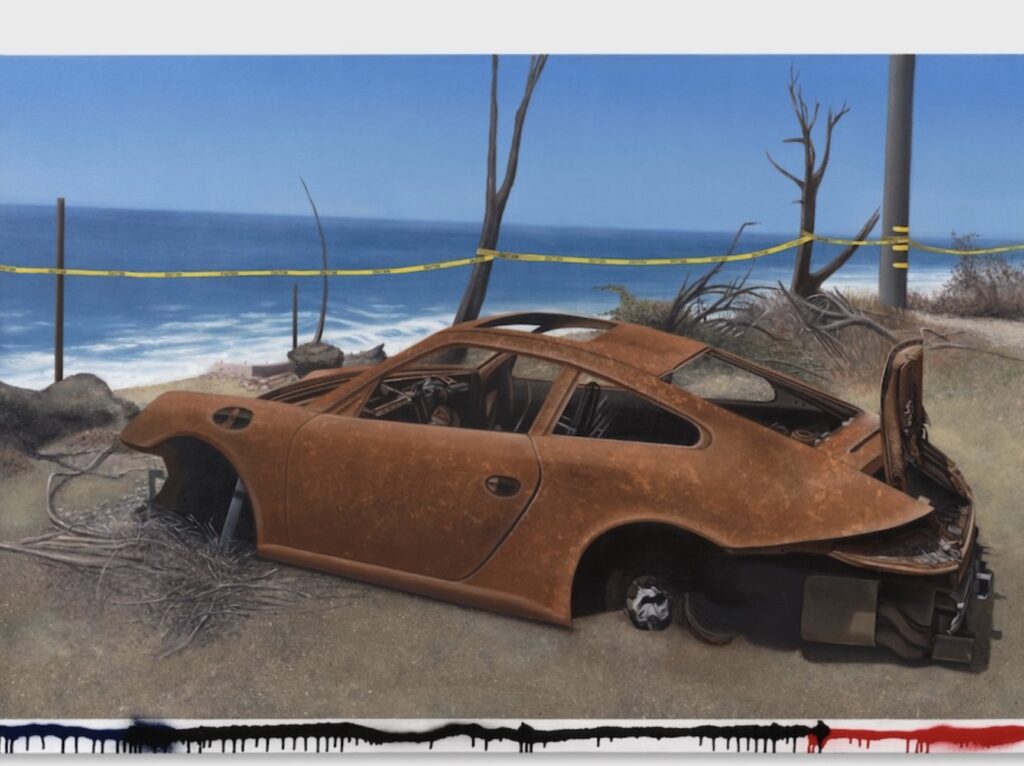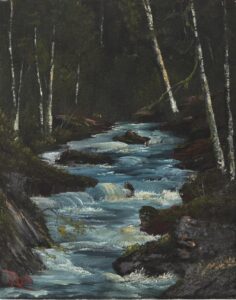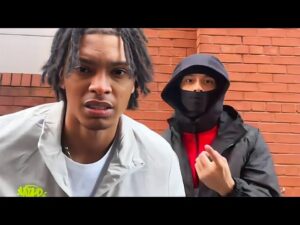Los Angeles is inseparable from the car. Unlike cities where trains or subways orchestrate urban life, LA sprawls outward on the rhythm of asphalt and exhaust. Vehicles here are more than transit—they are metaphors of class, labor, and identity. Alfonso Gonzalez Jr., in his second solo exhibition with Matthew Brown Gallery, takes this truth and magnifies it. NO PARKING—opening September 19, 2025, with a public reception—creates a narrative of the city told not by its citizens’ faces but by their machines.
Cars in this exhibition are not simply objects but witnesses. A burnt van parked beneath a sacred mural, a Porsche swallowed by wildfire, food trucks and pickup trucks tagged by graffiti—they all become substitute bodies for lives we can only infer. The absence of people makes the presence of their histories even sharper.
Sculptures as Gatekeepers
Upon entering, visitors meet two human-scale sculptures modeled after the makeshift barriers Angelenos often improvise to claim scarce curbside space: buckets filled with cement, metal rods planted in the dirt, cones stacked at odd angles. Gonzalez Jr. transforms these utilitarian objects into something simultaneously ancient and contemporary. Layered with paint, dust, and dirt, their surfaces conjure the eroded texture of time.
Here, an ordinary “No Parking” sign is elevated to the monumental. The structures recall Mesopotamian ziggurats as much as minimalist sculpture. Their dual reading—ancient sacred architecture and urban bricolage—captures Gonzalez Jr.’s method: to treat the overlooked fragments of Los Angeles as if they were enduring monuments of civilization.
Abstract Facades: Painting Without Signs
Three corresponding paintings stand nearby. Unlike his detailed depictions of scorched cars, these canvases are stripped of legible text or explicit imagery. Instead, Gonzalez Jr. abstracts architectural textures—stucco, concrete, corrugated metal—into quiet planes of color and material.
The effect is meditative. These works remind us that the city’s surfaces themselves are palimpsests, walls that remember every poster glued, every tag painted over, every patch of dirt embedded in the paint. Their minimalism insists on slowing down, countering the velocity of LA’s freeways with stillness.
Portraits Without Faces: The Polyptych
The adjacent gallery houses the centerpiece: a polyptych of ten paintings spanning two walls in an L-shaped formation. Each canvas appears autonomous, yet they are tied together by a single streak of spray paint across the lower edge—a visual thread that recalls both graffiti’s mark-making and the blurred view from a speeding car.
In these works, Gonzalez Jr. practices what could be called portraiture without faces. Each car tells a life:
-
Medrano shows a fire-gutted van resting on a tow truck beneath a mural of Michelangelo’s Creation of Adam. The juxtaposition of divine touch and vehicular wreckage amplifies the sacred and profane.
-
Tocco presents a Porsche destroyed by the Palisades Fire, gleaming like a relic against Malibu’s horizon. Beauty and devastation collapse into the same frame.
The cars are parked, abandoned, immobilized. They resist speed and futurity. Instead, they record time’s scars—rust, scorch, dents. Each painting becomes both documentation and elegy.
Los Angeles as Palimpsest
To understand Gonzalez Jr.’s work, one must see Los Angeles as a palimpsest. The city’s surfaces—its walls, cars, signs—are layered endlessly with paint, advertisements, graffiti, and repairs. Gonzalez Jr., trained as a sign painter, carries this sensitivity into his canvases. Brush marks, streaks, collaged textures are deliberately left visible. Unlike commercial signage that seeks clarity and finish, these paintings revel in imperfection and accumulation.
This gesture aligns Gonzalez Jr. with a lineage of LA artists who foreground surface and urban residue: from Ed Ruscha’s gas stations to Mark Bradford’s collaged street papers. Yet Gonzalez Jr.’s work feels distinctly of this moment, grappling with ecological disaster, urban precarity, and the survival economies visible in every overstuffed RV and scorched sedan.
Vehicles as Stand-Ins for Lives
By excluding human figures, Gonzalez Jr. paradoxically intensifies their presence. A graffitied food truck suggests the labor of undocumented workers. A burnt van hints at a family displaced by fire. An RV parked indefinitely recalls the housing crisis pressing against LA’s glamour.
In this sense, the vehicles are not only objects but protagonists. They stand for resilience and fragility alike. As the art critic Rebecca Solnit once noted, absence can be “a presence in its own right.” Here, absence of human bodies allows viewers to imagine themselves within the city’s anonymous flows.
The Aesthetics of Stasis
The cars Gonzalez Jr. paints are never in motion. They resist the cliché of LA speed culture—the sports car tearing down Mulholland Drive, the freeway chase filmed for cinema. Instead, his vehicles are still, mute, and often broken.
This stasis produces an aesthetic of endurance. Rust, scorch, and graffiti become not marks of destruction but inscriptions of survival. These cars live beyond their use-value, entering the realm of artifact. In Gonzalez Jr.’s vision, the immobilized car becomes as worthy of contemplation as an ancient ruin.
Between Minimalism and Street Aesthetics
Gonzalez Jr.’s practice balances two poles: the clean geometry of minimalist form and the messy improvisation of street aesthetics. His parking-barrier sculptures flirt with Donald Judd’s serial forms, yet their surfaces—gritty, weathered—resist minimalist purity. His paintings recall Ellsworth Kelly’s focus on shape and color, yet the marks of spray paint and brush gestures keep them rooted in the vernacular.
This duality reflects Los Angeles itself: a city of modernist architecture and improvised street culture, of high design and DIY survival. Gonzalez Jr. bridges these worlds with an unflinching eye.
Time, Disaster, and Los Angeles
Many works in NO PARKING touch on disaster: fire, abandonment, decay. Los Angeles is a city perpetually threatened by catastrophe, whether earthquakes, wildfires, or economic collapse. Gonzalez Jr. does not aestheticize these events but rather records their traces on the vehicles left behind.
The burnt Porsche in Tocco is not simply a symbol of loss; it becomes an emblem of how even luxury is vulnerable to elemental destruction. Similarly, the scorched van in Medrano situates disaster within the ordinary. These works highlight the fragile line between survival and ruin in a city of extremes.
Social Histories in Metal and Paint
Every vehicle carries a social history. A food truck speaks of migrant labor and the informal economy. An RV becomes evidence of homelessness and improvisation. A graffitied pickup truck signals territoriality, community, and resistance.
Gonzalez Jr. understands these vehicles as cultural texts. They are not neutral machines but repositories of stories. By painting them with such care, he legitimizes their narratives within the gallery space, giving visibility to lives often marginalized.
The City as Studio
Gonzalez Jr.’s training as a sign painter is crucial. Sign painting is inherently public, pragmatic, and impermanent. It requires working with the textures of walls, sidewalks, and weather. This background infuses his art with an attention to surface and material often absent from traditional painting.
In NO PARKING, the city itself seems to have become the studio. Dust, dirt, and layered paint are not imitations but incorporations of LA’s own textures. The result is work that feels inseparable from its environment, as if the gallery walls were cut from the city’s skin.
Witnesses of Los Angeles
NO PARKING is more than an exhibition of paintings and sculptures. It is a meditation on how Los Angeles is lived, endured, and remembered. Through cars—burnt, tagged, abandoned—Gonzalez Jr. tells stories of labor, disaster, resilience, and absence. His works compel us to slow down, to see the city not as a blur from the freeway but as a textured archive of lives.
In a culture obsessed with speed and novelty, Gonzalez Jr. insists on stasis and endurance. His vehicles, immobilized yet monumental, remind us that what remains is as telling as what moves. They are the witnesses of a city always in motion yet always marked by what it leaves behind.
No comments yet.








